#luisa casati
Text
described as wearing more perfume than clothing,
on Marchesa Luisa Casati, Infinite Variety by Michael Orlando Yaccarino & Scott D. Ryersson
#words#marchesa luisa casati#luisa casati#michael orlando yaccarino#scott d. ryersson#fei: my infinite variety#marguerite: my abandoned glitter#henriette: my beautiful age#dominique: my dangerous girlhood#infinite variety#vaelena: my oyster sickness
650 notes
·
View notes
Text

Augustus Edwin John - The Marchesa Casati (1919)
222 notes
·
View notes
Text

Marchesa Luisa Casati
- Man Ray (1922)
342 notes
·
View notes
Text
Notable portraits by Beltran Masses
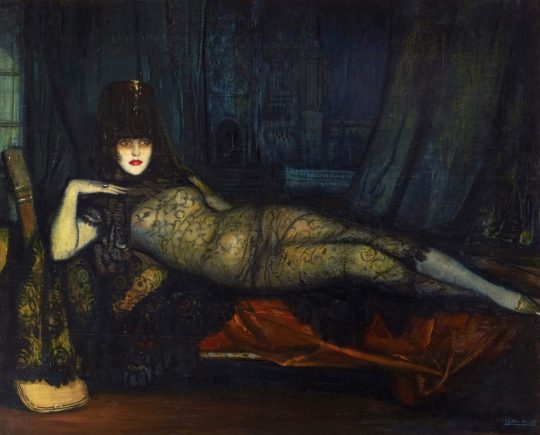
Federico Beltrán-Masses (1885–1949) ~ La Maja Maldita, 1918. Oil on canvas. Posed (likely) by Carmen Tórtola Valencia

Federico Beltrán-Masses (1885–1949) ~ La Marchesa Casati, 1920. Oil on canvas
View on WordPress
#carmen tortola valencia#federico beltran masses#la casati#marchesa casati#la divina marchesa#luisa casati#tortola valencia#maja maldita#marchesa luisa casati#oil on canvas#painting#Gemälde#1920s#peinture#pintura#pittura#cuadro#portrait#1910s#Porträt#retrato#ritratto#portret#retrat#Bildnis#tórtola valencia#women artists
268 notes
·
View notes
Text

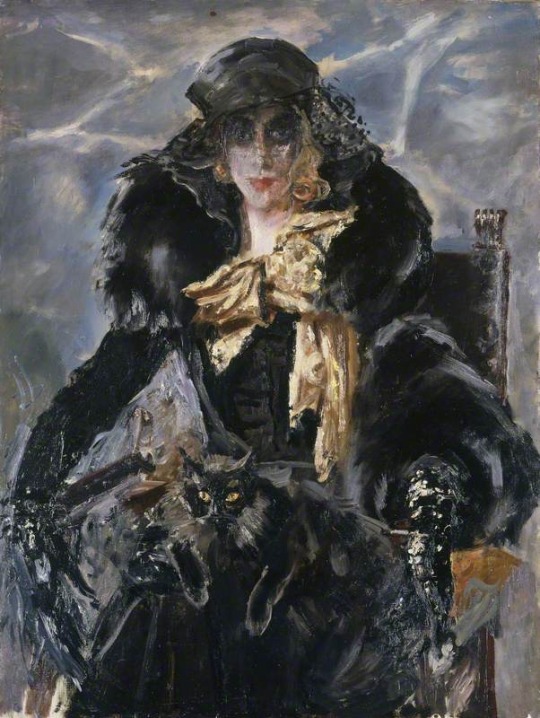
Marchesa Luisa Casati
Augustus John, The Marchesa Casati, 1919
Augustus Edwin John, Marchesa Casati, c. 1942
#luisa casati#augustus john#welsh painter#welsh artist#portrait#portrait painting#portrait art#portraiture#british art#british painter#british painting#british artist#marchesa#aristocracy#celebrity portraits#cafe society#modern art#art history#aesthetictumblr#tumblraesthetic#tumblrpic#tumblrpictures#tumblr art#aesthetic#tumblrstyle#beauty
44 notes
·
View notes
Photo
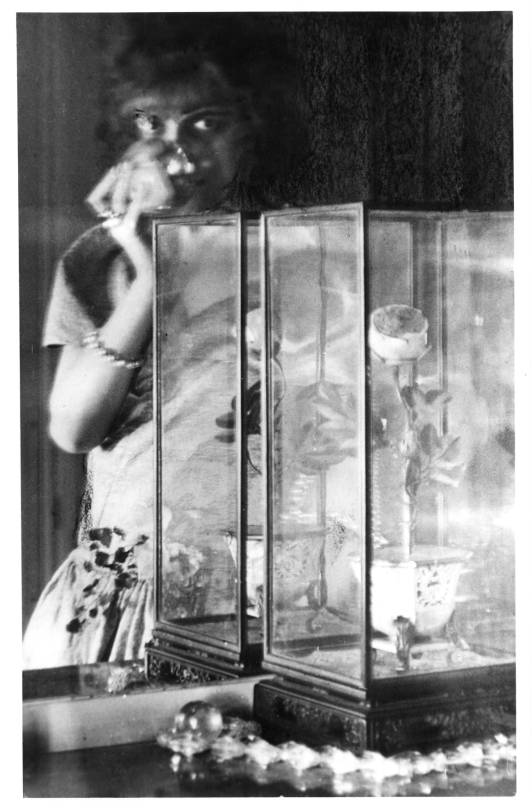
1922 Man Ray, Marchesa Luisa Casati.
"In 1922, Luisa visited a young and still unknown photographer named Man Ray. In his autobiography, the American tells the story of the photo that became the most famous of all the representations of the Marchioness Casati (...) "I drew a few where one could distinguish a semblance of face; On one of the negatives, we saw three pairs of eyes. It could have been mistaken for a surreal version of the Medusa. It was precisely this photo that delighted her: I had made a portrait of her soul, she said, and she ordered dozens of copies from me. I wish my other clients had been so easy to please. The photo of the marquise went around Paris. Figures from the most closed circles began to come, all expecting miracles. I had to leave my hotel room and find a real studio. » (x)
#1922#portrait#man ray#marchesa luisa casati#luisa casati#marchesa casati#marquise casati#Marquise luisa casati#la Marquise#luisa amman casati#Luisa Adele Rosa Maria von Amman#Luisa Adele Rosa Maria Amman#Luisa Amman#Marquise Casati Stampa di Soncino#Marchesa Casati Stampa di Soncino#Luisa Marchesa Casati Stampa Di Soncino#Luisa Casati Stampa di Soncino#Marchesa Casati Stampa
151 notes
·
View notes
Text
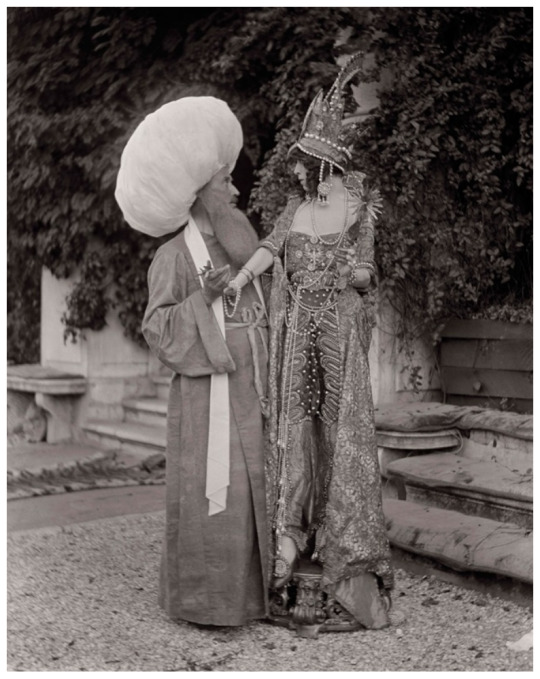
Luisa Casati and mystery companion in the garden of Palazzo Venier dei Leoni - Luisa Casati, started to live in the famously unfinished palazzo in 1910.
Luisa was one of the wealthiest women in Italy, having inherited her father’s industrial fortune. As the wife of the Marchese Camillo Casati, she was allied to the highest ranks of Italian nobility. Yet after falling under the spell of the notorious writer and aesthete Gabriele D’Annunzio, Luisa had turned her back on conventional society and, with a passion that bordered on profound eccentricity, vowed to turn her life into a work of art.
Venice was to be her theatre, the romantically derelict Venier palazzo her stage. Luisa hired an army of workmen to transform the interior into a dazzle of marble, glass and gold, but she was determined to retain the building’s dirty, overgrown and crumbling exterior.
Further evidence of Luisa’s maverick taste was revealed in the menagerie of pets that she began to gather around her — parrots, monkeys, snakes and peacocks, plus a flock of albino blackbirds that she would dye different colours to suit her mood. Most beloved of these pets was the elegantly spotted cheetah that accompanied her everywhere.
Photo: Mariano Fortuny, Palazzo Pesaro degli Orfei – Museo Fortuny © Fondazione Musei Civici di Venezia / via: Christie's

Today the Palazzo Venier dei Leoni now the Peggy Guggenheim Collection, Venice named after its last resident.
20 notes
·
View notes
Photo

“THE MARQUISE CASATI WITH HORSES”
MAN RAY // PARIS, 1935
[gelatin silver print | 15.4 × 10.3 cm.]
“One of Man Ray’s earliest portrait commissions in Paris came from the Marquise Luisa Casati, an eccentric Italian aristocrat who was an important patron of vanguard artists. Casati’s audacious hair and makeup were part of the fantastical world she constructed, which included a taste for extravagant clothing, interior design, costume balls, and pets. Her masquerade costume here represents her as the Empress Elizabeth of Austria.”
#man ray#surrealism#portrait#film photography#vintage#luisa casati#paris#monochrome#analog#surreal#modern art#30s#american#photography#u
349 notes
·
View notes
Photo

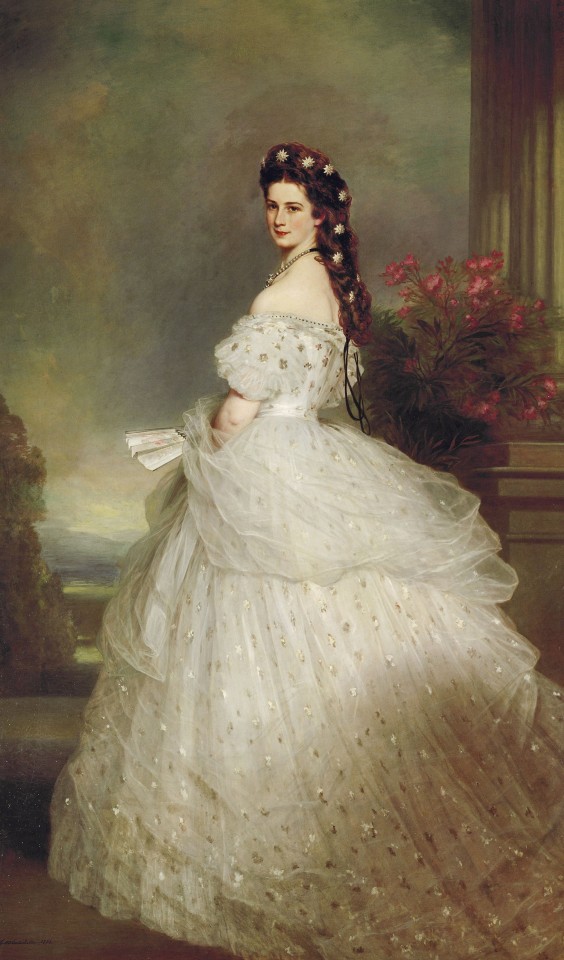
"My inspirational icon of glamorous eccentricity is the Marchesa Casati. I would like to give every person who thinks she is so risque and so eccentric a book called Infinite Variety so she can read about what eccentricity really is and who was living it in a big way almost a hundred years ago! "I want to be a living work of art!" the Marchesa said.
I also love Empress Elizabeth of Austria, who seemed pretty eccentric to me too. Being corseted down to 17 inches in a flowing black silk riding habit and sitting sidesaddle and jumping horses shows a real dedication to glamour, no?
- Dita von Teese
#luisa casati#marchesa casati#sissi#empress elizabeth of austria#sissi of austria#dita von teese#quote#eccentricity#glamour
60 notes
·
View notes
Text
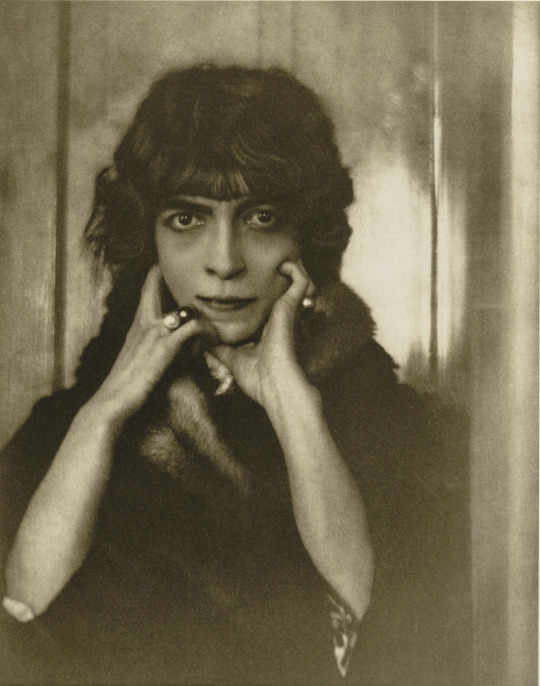
Close-up of ‘La Marchesa’ Luisa Casati (aka La Casati) wearing a fur trimmed coat. She poses with her hands on the sides of her face. 1912
Photo: Baron Adolf de Meyer
23 notes
·
View notes
Text
If the public can predict you, it starts to like you. But [she] didn't want to be liked. She wanted to incite.
on Marchesa Luisa Casati, Infinite Variety by Michael Orlando Yaccarino & Scott D. Ryersson
#words#infinite variety#yvon: my dangerous liaisons#marchesa luisa casati#luisa casati#michael orlando yaccarino#scott d. ryersson
24 notes
·
View notes
Text

Giovanni Boldini - La marchesa Luisa Casati con penne di pavone (1914)
192 notes
·
View notes
Text
Le donne del mio Vate – ☾LXXI☽ 🖋️
Cap. 9 –L’ALTRA LUISA : LUISA CASATI – Esoterismo (7)
L’esoterismo che tanto attrae la Divina Marchesa affascina molto anche Gabriele che spesso si diverte a narrare una specie di stregoneria compiuta da suo nonno paterno alla sua nascita: racconta infatti che il vecchio mise tra le fasce del nipote una moneta d’argento perché, secondo la tradizione, potesse fargli il dono di una grande…

View On WordPress
#analogy#correspondence#D&039;Annunzio#esotericism#eye#goblin#grandfather#hand#illusion#imagination#luck#Luisa Casati#magic#magician#mother#object#Olga#photo#poetry#presence#protection#ring#treasures#tricks#vision#witchcraft
0 notes
Text



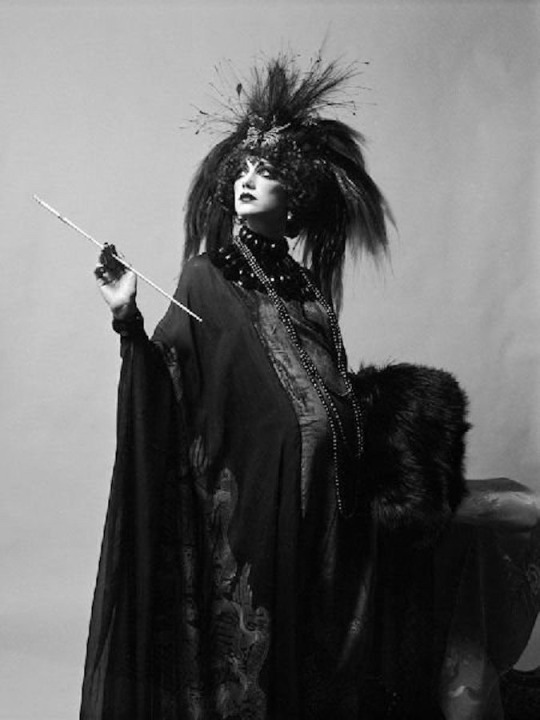
Marchesa Luisa Casati, 1881–1957
Italian patron of the arts & muse
#luisa casati#muses#art patron#portraiture#portrait#portrait art#portrait photography#portrait photoshoot#italian#aristocracy#the heiress#cafe society#rich girl#modern art#art history#aesthetictumblr#tumblraesthetic#tumblrpic#tumblrpictures#tumblr art#aesthetic#tumblrstyle#beauty
41 notes
·
View notes
Photo
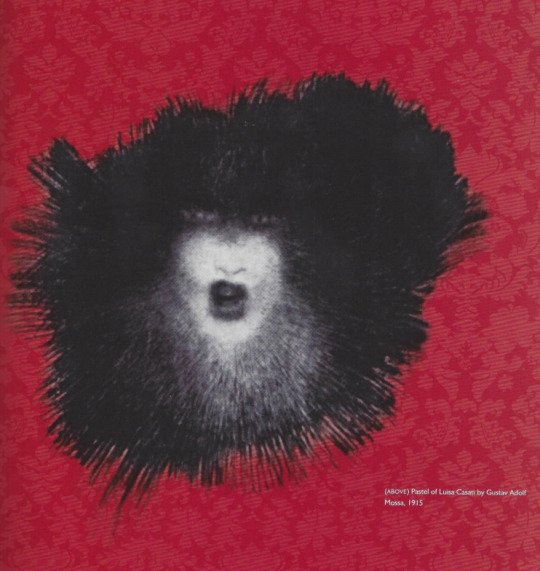
Gustav Adolf Mossa, Pastel of Marchesa Luisa Casati. 1915
Luisa was on holiday in Nice when she chanced accorss the work of Gustav Adolf Mossa. This French symbolist dedicated his craft to rendering fantastical creatures of myth – many of them in ghoulish feminine forms with bloodied lips and nightmarish eyes. His unsettling pastel vision of Luisa reduces her to a shrieking, nonhuman elemental force. At least in part, Mossa perhaps meant the almost perceptible scream from his siren-like subject to echo the horror and indignation expressed by so many at the recent start of the First World War. (x)
#gustav adolf mossa#pastel#painting#1915#art#marchesa luisa casati#la casati#mossa#la marchesa#luisa casati#marquise casati#marchesa#marquise#marchesa casati#Marchesa Luisa Casati.#Marchesa Casati Stampa#casati#stampa#Marquise Casati Stampa di Soncino#Marchesa Casati Stampa di Soncino#Luisa Marchesa Casati Stampa Di Soncino#Luisa Casati Stampa di Soncino#luisa amman casati#Luisa Adele Rosa Maria von Amman#Luisa Adele Rosa Maria Amman#amman#Luisa Amman#Marquise luisa casati#la Marquise
124 notes
·
View notes
